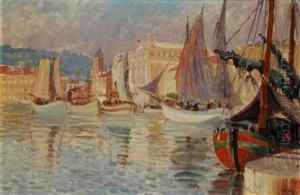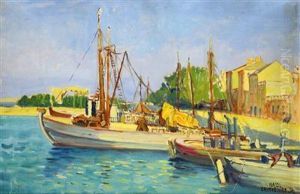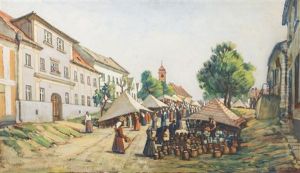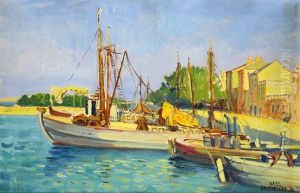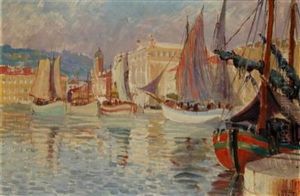Frantisek Nagl Paintings
František Nagl was a Czech artist known for his contributions to modern art, particularly in the realms of painting and graphic design. Born in 1890 in the Austro-Hungarian Empire, which is today's Czech Republic, Nagl was part of a generation of artists who were exploring new aesthetic territories amid the dramatic social and political changes of the early 20th century. His work, while not as widely recognized as some of his contemporaries, played a significant role in the development of Czech modern art.
Nagl's early years were spent in a region rich with cultural and artistic heritage, which greatly influenced his artistic development. He studied at the Academy of Fine Arts in Prague, where he was exposed to both traditional and contemporary art forms. This education provided him with a solid foundation in the techniques of painting and drawing, but it was his personal exploration and experimentation that led him to develop a unique style that blended elements of Impressionism, Cubism, and Expressionism.
Throughout his career, Nagl was deeply engaged with the artistic community in Prague and beyond. He was a member of several art societies and participated in numerous group exhibitions. His work during the 1920s and 1930s reflects a keen interest in the modernist movements that were sweeping across Europe, yet he maintained a distinctive approach that set his work apart. Nagl's paintings often featured bold colors, dynamic compositions, and a blend of realism and abstraction, capturing the essence of his subjects with both emotional depth and aesthetic innovation.
Despite facing the challenges of World War II and the subsequent political and social upheavals in Czechoslovakia, Nagl continued to produce work that was both relevant and resonant. His later work became somewhat more introspective, reflecting the complexities of the post-war world. However, he never lost his commitment to exploring new artistic directions and remained active in the art scene until his death in 1965.
František Nagl's legacy is that of an artist who was constantly evolving, never settling into a single style or ideology. His body of work is a testament to the transformative power of art and its ability to reflect and shape the human experience. Though he may not be as well-known internationally as some of his peers, his contributions to Czech art and modernism more broadly continue to be celebrated and studied by art historians and enthusiasts alike.
